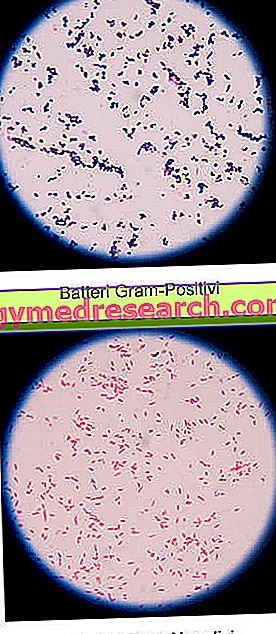Chestnuts and flour
Despite being only marginally used, chestnut flour is the basic ingredient for the preparation of numerous gastronomic specialties, such as castagnaccio, desserts and polenta.
While on one hand the fruit of the chestnut still retains a certain commercial value, on the other, in the context of the Italian food economy, chestnut flour is of marginal importance, subject to the production of confectionery specialties typical of some regions.

Chestnut flour has a high caloric intake: for this reason, chestnuts and homonymous flour were - above all in the past - a very important source of livelihood for many peoples, in particular for the inhabitants of particularly hostile mountain regions. Considering the high nutritional value of the chestnut - and of the derived products - this fruit was known with the term "bread of the poor".
The use of chestnut flour is currently widespread especially in Tuscany and Emilia Romagna.
Chestnuts: generalities
Chestnuts are the fruits of Castanea sativa, more commonly called chestnut. It is a powerful tree belonging to the Fagacee family, which has oblong and serrated leaves, and tasty, mealy and edible fruits. Strong and strong wood is also used. The chestnut plant grows mainly in mountainous regions, from 450 to 900 meters.
Chestnut flour: nutritional analysis
Chestnuts are rich in complex carbohydrates: in this regard, chestnut fruits are an excellent alternative to cereals.
Chestnut flour is an important food in nutritional terms, thanks to the large percentage of carbohydrates (76.2 g / 100 g of flour) and starches in particular, and to the discrete protein content (6.1 g / 100 g of product) and fats (3.7 g / 100 g of flour). The remaining 11.4 g consist of water. Chestnut flour is a source of mineral salts, including magnesium, sulfur, potassium (especially), iron and calcium, as well as the moderate content of vitamins B1, B2, C and PP.
From chestnut to flour
In order to obtain a floury product, chestnut processing is rather simple; nevertheless, the various steps that lead to the realization of the finished product must be performed very carefully.
The harvesting of chestnut fruits takes place in October, the ideal period because the hedgehogs containing chestnuts fall spontaneously from the plant.
After extracting the chestnuts from the casings, they are placed in huge bales of jute and then taken to the caniccio (small dryer consisting of a fire lit with chestnut wood), for drying the fruit. After 20 days, the chestnuts are usually subjected to beating - to clean them from the shell - and, subsequently, to toasting. The last step is grinding: the chestnuts are placed in a special water or stone mill, and then through the screening (or sieving) the particles of chestnut powder are selected. In this way, it is possible to obtain a flour with a homogeneous grain size.
Considerations
Currently, the chestnut is a very expensive fruit: therefore, when the flours are obtained from high quality chestnuts, the value and the price of the raw material weigh heavily on the finished product. In order to reduce the price of flour, we tend to use low quality chestnuts. In doing so, one runs the risk of obtaining a poor product: to overcome these drawbacks, some flours are obtained starting from crushed chestnuts, separated during the selection intended for direct consumption.
However, there are also chestnut flours at affordable prices and, at the same time, of excellent quality.
The flavor of chestnut flour must not be bitter, the color must be clear and the composition impalpable.
Chestnut flour can be consumed by celiacs, as it does not form gluten.
Uses of chestnut flour
As we have seen, chestnut flour is the cardinal ingredient for the preparation of numerous and varied culinary specialties. The most famous confectionery preparation with chestnut flour is undoubtedly the castagnaccio, a typical dessert of the Tuscan-Emilian regions: water, oil, sugar and dried fruit (pine nuts, raisins, nuts, etc.) are added to the flour, and everything is cooked in the oven.
Chestnut flour is also used for polenta: the preparation is almost the same as for classic polenta with corn flour.
Among the other desserts, we remember the pancakes with chestnut flour and the panzerotti.
Curious is the use of chestnut flour for making fresh pasta: generally, chestnuts reduced in powder are mixed with other types of flour (in general, wheat flour), eggs and water.
Unlike other flours obtained from dried fruit, chestnut flour has a very low fat content: in this regard, some dieticians recommend the use of chestnut flour to replace other flours (eg almonds).
Alice's videoricettes on MypersonaltrainerTv
Soft Pizza with Chestnut Flour
X Problems with video playback? Reload from YouTube Go to Video Page Go to Video Recipes Section Watch the video on youtubeSummary
Chestnut flour: in short
| Chestnut flour | Product derived from the grinding of dried chestnuts: chestnut flour is the basic ingredient for the preparation of numerous gastronomic specialties, such as castagnaccio, desserts and polenta |
| Chestnut flour: tradition of the past | Chestnut flour : known as sweet flour or poor bread Very important source of livelihood for many peoples of the past, in particular for the inhabitants of mountain regions |
| Spread of chestnut flour | Especially in Tuscany and Emilia Romagna |
| Chestnuts: botanical description |
|
| Chestnut flour: nutritional analysis |
|
| Preparation of the flour |
|
| Chestnut flour and celiac disease | People with celiac disease can eat chestnut flour because it does not form gluten |
| Characteristics of chestnut flour | The flavor of chestnut flour must not be bitter, the color must be clear and the composition impalpable |
| Chestnut flour: uses |
|



